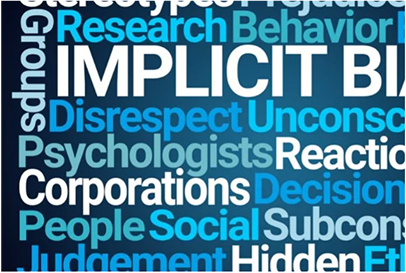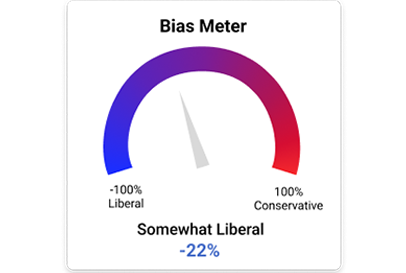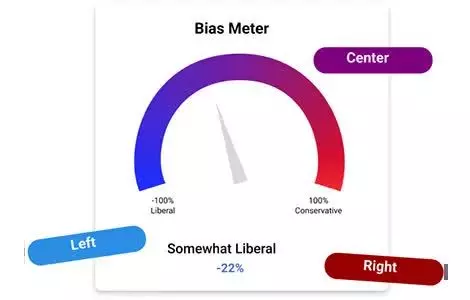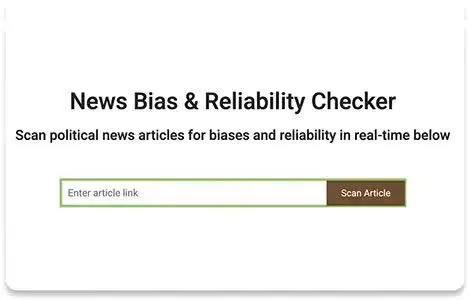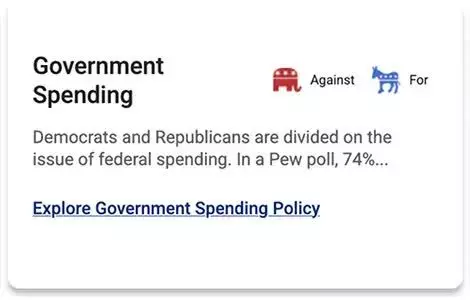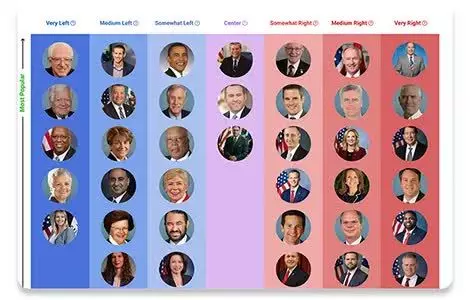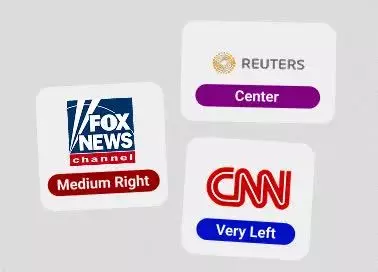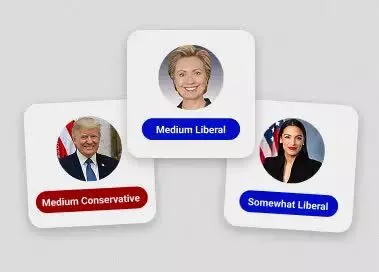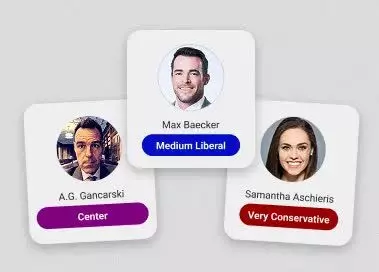Biasly’s Personal Bias Survey
In today’s polarized climate, recognizing your own political bias is essential—it shapes how you read news, vote, and engage online. But how well do you really know your own leanings?
political orientation based on how you
respond to carefully crafted statements”

What is Personal Political Bias
Personal political bias refers to
your individual leanings or predispositions toward specific political ideologies, policies, or parties.
Personal political bias is internal and shapes how you interpret news and political issues. It often forms unconsciously and becomes noticeable when challenged. Recognizing it helps you understand both how and why you think the way you do.
Types of bias developed and shaped by a wide range of factors:
Grew-up Values
Education
Religious Beliefs
Consumed Media
Socioeconomic
Culture Impact
Why Understanding Your Bias Is Important

Makes You Step Back and Think Critically
Recognizing your political bias helps you pause, think critically, and stay curious. It allows you to separate facts from emotion and see how information is framed.
Improve Media Literacy Skills
In a world of filter bubbles and algorithm-driven content, being aware of your bias helps you spot information and appreciate diverse views. It empowers you to:
- Identify ideological framing
- Engage in more thoughtful political discussions
- Vote with greater insight
- Consume media with clarify and openness
Media Bias Detection Tools
How the Biasly Personal Bias Survey Works
The Biasly Personal Bias Survey helps you identify where your positions and beliefs
fall on the political spectrum for certain issues, such as follows:

Government Regulation
involves government policies, with positions ranging from advocating open borders to supporting strict immigration controls
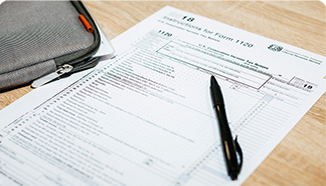
Taxation
involves levying taxes, with positions ranging from supporting higher taxes for public services to favoring tax cuts for economic growth.

Healthcare
involves government policies, with positions ranging from supporting universal coverage to favoring private healthcare.
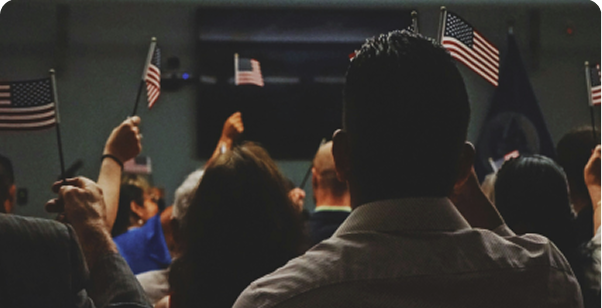
Immigration
involves government policies, with positions ranging from advocating open borders to supporting strict immigration controls.

National Security
involves government measures, with positions ranging from advocating increased defence spending to prioritizing diplomatic solutions.

Social Issues
involves government policies, with positions ranging from advocating systemic reforms to emphasizing individual responsibility.
What You Get From The Survey
Its Accurate Reflection of Views
Questions are designed to capture your true opinions, not reactions to bias.
Open-Mindedness
Promotes the consideration of diverse perspectives and reduces the impact of preconceived notions.
Enhanced Media Literacy
Helps you recognize your own biases, leading to more critical evaluation of news and information sources.
Improved Communication
Fosters better dialogue by highlighting differences in perception and understanding.
Increased Self-Awareness
Encourages you to reflect on your beliefs and how they may influence your perceptions.
Better Decision-Making:
Reduces the influence of unconscious biases, leading to more informed and balanced decisions.
Accurate Assessment of your Biases
Your result is calculated using the same AI-assisted, analyst-informed method Biasly uses to assess media bias. Each response is scored based on how it aligns with left or right ideologies, and a weighted score places you on a five-point spectrum.
What Your Score Means
- Reflects how your beliefs align with broader political frameworks and policy positions
- It’s not arbitrary—it’s based on consistent patterns in your responses.
- Stronger, more consistent answers in one direction lead to a more definitive placement on the spectrum.
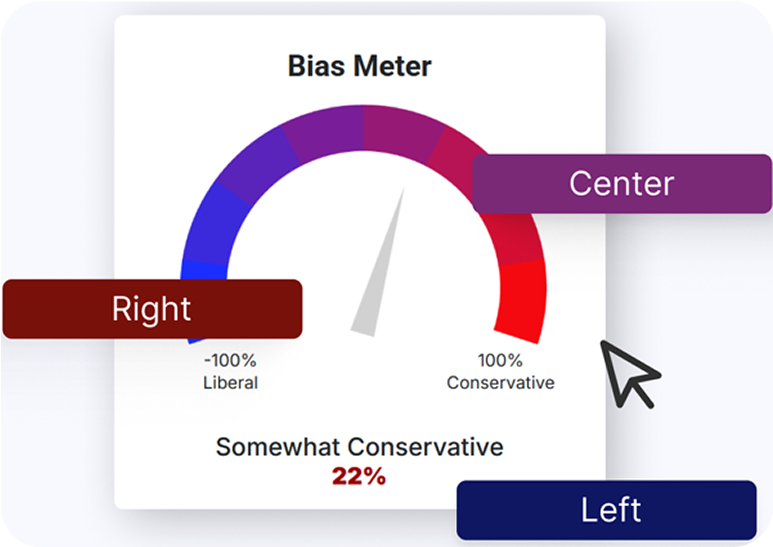
This method uses the same logic behind Biasly’s media analysis. It combines algorithmic scoring with ideological markers and human-informed criteria to produce a reliable personal bias rating.
What Makes Biasly’s Scale Unique
Unlike basic quizzes based on political party affiliation or issue-driven surveys prone to confirmation bias, Biasly’s system is built on a methodology used to assess real-world journalism.
It analyzes how your answer reflects political priorities, framing, and alignment with ideological discourse.
Here are examples of how different user resposes may reflect underlying political values and ideological leanings:

Support for strict immigration control might reflect right views on national identity, law and order, or economic self-sufficiency.

Support for environmental regulation may signal left-leaning views and deeper beliefs in government responsibility and social justice.
Survey is designed to avoid binary categories by measuring both the direction and intensity of your beliefs.
Offers a more nuanced, accurate reflection of your worldview and less confined by simplistic political labels.
What Your Results Mean
Receiving your personal bias rating is not about putting you in a box or assigning a political label. Rather, it provides a baseline understanding of where you currently stand in the broader political landscape.
Very Left
Responses strongly aligned with progressive viewpoints across a range of topics.
Moderate
Evaluate issues on a case-by-case basis, without consistently leaning left or right.
Very Right
Views are clearly and strongly aligned with right-leaning principles across most or all surveyed topics.
Somewhat Left
A general leftward lean, perhaps with a few centrist views mixed in.
Somewhat Right
To support traditional or right-leaning views in some areas, while still maintaining flexibility.
No matter your result, it should serve as a mirror rather than a verdict. It can offer insight into your personal philosophy, help you recognize your blind spots, and give you language to better articulate your beliefs.
Interactive Tools Promoting Media Literacy
How to Use Your Results Moving Forward
Understanding your political bias is the first step. With that awareness, you can engage more thoughtfully with both information and others. For instance
- You might seek our reputable news sources from across the spectrum to blanace your understanding of a topic
- You might notice yourself reacting defensively to viewpoints that challenge your own and pause to consider why.
Explore New Tools

Bias Meter
Uses AI analysing to highlight bias in real life.
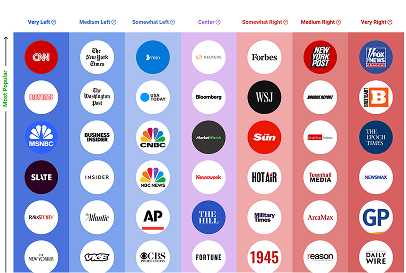
Media Bias Chart
Visually maps outlets across the political spectrum.
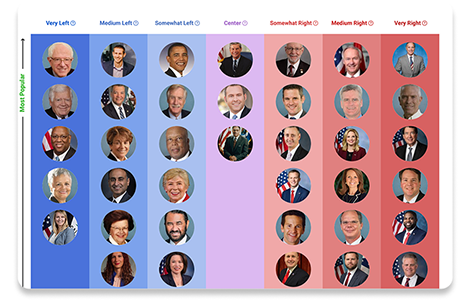
Politician Bias Chart
Maps political leaders by their statements and policy positions.
Assess Your Bias Over Time
Your views can change with new experiences and information. Re-taking the survey periodically helps you understand your bias and how it evolves over time.
Final Thoughts: Awareness Is Empowerment
Knowing your political bias helps you think critically, communicate with empathy, and navigate today’s polarized media. It fosters understanding, reduces division, and supports more informed, responsible engagement with news and others.

Take the Survey
Take the Biasly Personal Bias Survey below to find out where you land on the political spectrum.
If you’re viewing this outside the blog, you can also take the survey by visiting forms.biasly.com/personal-bias-survey.
Explore New Tools

Bias Meter
Lorem ipsum dolor sit amet, consectetur adipiscing elit. Ut elit tellus, luctus nec ullamcorper mattis, pulvinar dapibus leo.

Bias Meter
Uses AI analysing to highlight bias in real life.

Bias Meter
Uses AI analysing to highlight bias in real life.
























